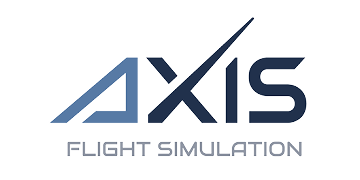
Simulator Maintenance Tips and Best Practices
4. Juli 2024
AXIS qualifies mainland Europe’s first Level-D CL350 full flight simulator
6. August 2024
Simulator Maintenance Tips and Best Practices
4. Juli 2024
AXIS qualifies mainland Europe’s first Level-D CL350 full flight simulator
6. August 20242. August 2024
Qualifying flight simulators – how to ensure quality training
By Christian Theuermann, member of the executive board, AXIS Flight Simulation
Flight simulators offer a safe and controlled environment to practice a range of training scenarios, from routine operations to emergency procedures. However, the qualification of Full Flight Simulators (FFS) is governed by a web of regulations that vary by region and regulatory body. Understanding these standards is essential for manufacturers, training providers and pilots to ensure their training remains focused and compliant.
Qualifying flight simulators around the world
Qualification standards for FFS vary across different regions and fall under the responsibility of national aviation authorities.
In the United States, this role is fulfilled by the Federal Aviation Administration (FAA), while in Europe, it’s managed by the European Union Aviation Safety Agency (EASA). Each has its own set of technical standards and evaluation procedures that simulators must meet to achieve qualification and be ready for use.
The qualification process involves rigorous testing and evaluation to ensure the simulator can accurately replicate aircraft performance and handling characteristics. However, simulators qualified under one regulatory authority (e.g., EASA) cannot be automatically used under another (e.g., FAA) without meeting the respective local requirements and obtaining the necessary approvals. For instance, a simulator qualified at an Approved Training Organization (ATO) in Europe cannot be used for pilot training under the FAA's Part 145 training programme in the US, unless it has been qualified according to FAA standards.
Achieving qualification ensures the simulator adheres to the specific safety and operational benchmarks required by the regional authority.
Manufacturing compliance
To ensure a flight simulator meets the EASA/FAA requirements, manufacturers must adhere to detailed guidelines provided by aviation authorities. These manuals will outline the necessary behaviour of the aircraft including flight dynamics, handling characteristics and environmental conditions. Manufacturers follow these stringent standards closely during the development and construction phase to ensure high fidelity and successful qualification.
Compliance is supported by a comprehensive list of requirements, each with an associated test to verify that the simulator meets its expected level of qualification. Testing ensures that every aspect of the simulator, from its visual systems to its motion and control forces, accurately replicates the corresponding aircraft.
Adherence to ISO 9001:2015, the globally recognised standard for quality, assures rigorous management throughout the manufacturing process. It involves continuous monitoring and documentation of production quality, while making sure that every component of the simulator meets the highest possible standards.
Extensive testing is conducted to verify that the simulators performance matches the behaviour of the actual aircraft. The systems, including visual and motion and control forces are calibrated to ensure accuracy and realism.
The qualification process: step-by-step
The qualification process for an FFS is extremely detailed. It must be carried out according to regulatory guidelines and evaluate simulator performance in various flight conditions and scenarios. Tests include handling qualities, system functionalities and environmental factors.
It also involves the Master Qualification and Test Guide (MQTG), an authority-approved version of the Qualification Test Guide (QTG). The MQTG details the range of tests and evaluations required to ensure the simulator meets the specific performance and handling standards of the aircraft it simulates. It serves as the primary reference for both initial and recurrent qualifications, securing ongoing compliance with the regulatory requirements.
After these tests are filed with the EASA or FAA, the training organisation must apply for a qualification date. During the qualification, the simulator undergoes a formal evaluation by the relevant authority, including document reviews and on-site inspection to certify compliance with the authority standards. If the FFS meets all criteria, the authority issues a qualification certificate, approving the FFS for use in pilot training programmes.
Understanding qualification levels
FFS are categorised into different levels, with the fidelity of the systems and subsystems increasing with each level. The level of qualification directly impacts which training tasks can be practiced and what training credits pilots receive. It’s essential for training providers to choose simulators that meet their specific needs.
Level D simulators provide the highest level of realism, to the point that pilots should not be able to distinguish between a Level D simulator and the actual aircraft. A Level D qualification guarantees an immersive and precise replication of the aircraft’s behaviour, systems and environment, providing pilots with an unparalleled training experience. This includes critical situations, such as engine failure during take-off and landing.
From an operator's perspective, achieving Level D qualification means the simulator can be used for the full spectrum of training tasks. It allows the operator to use the simulator for everything from initial type rating and recurrent training to complex scenario-based training and emergency procedures.
Recurrent qualifications
AXIS Flight Simulation’s FFS come equipped with an eQTG (Qualification Test Guide) software. This facilitates automatic QTG tests necessary for initial and recurrent qualification, ensuring the efficiency and reliability of our training devices.
The global standards for qualifying FFS are diverse and complex, influenced by national aviation regulations. Understanding and navigating these requirements is essential for ensuring we can support training for the next generation of aviation professionals.


